Hello! It’s been a while since I posted a year in review. Honestly, it feels like year five and six just flew by but it’s good to be back!
If you haven’t seen earlier reviews, check our year one, two, three, and four.
Let’s go over some highlights from this year:
- Over $3.4m in annual recurring revenue
I’m proud of this figure in itself but this past year has been very difficult for revenue in particular. I’ll talk about that more below. - 17-person team
So grateful to every person on this small but mighty team. - 2 retreats
We went all out to Tokyo last May and then hosted Canny Cottage in Ontario in November. - Raised $0
Still going strong here with no plans to change that!
I publish a series of tweets every year on the anniversary of me quitting my full time job at Meta. I’ve still managed to do those so check them out: year 5, year 6, and year 7.
1/ Today marks 5(!!) years since I left my job @facebook (@meta?). In numbers:
— Sarah Hum (@sarahhum) November 18, 2021
💰 $2,200,000 ARR
🙏 1,100 customers
💬 68 investor chats turned down
💕 9-person team
👩🏻💻 8 remote team hangs
🚀 1 startup, @cannyHQ
✊ 0 dollars raised
1/ Today marks 6(!!) years since I left my job @meta. In numbers:
— Sarah Hum (@sarahhum) November 18, 2022
💰 $3,500,000 ARR
🙏 607 paying customers
💬 102 investor chats turned down
💕 13-person team
✈️ 6 team retreats
🚀 1 startup, @cannyHQ
✊ 0 dollars raised
The next year ahead is going to be tough 🧵👇
1/ This weekend marked 7 years since I left my job @meta. In numbers:
— Sarah Hum (@sarahhum) November 21, 2023
💰 $3.3m ARR
🙏 583 paying customers
💕 16-person team
✈️ 8 team retreats
🚀 1 startup, @cannyHQ
✊ 0 dollars raised
This was the first year where we didn't grow. Let's unpack 🧵👇
Between the tweets for year six and seven, we see a $200k ARR drop. Yes, year six was over-reported due to a pricing change but a big part of that was also the economy. One thing’s for sure: the world was/is still struggling and we felt that. All of a sudden, growth started to feel a lot more difficult.
Navigating economic lows
As pandemic panic subsided, recession worries escalated. Interest rates climbed to combat inflation with many countries hitting multi-decade highs. In the startup world, we started hearing pretty negative outlooks for growth.
How bad will the recession be?
— Patrick Campbell (@Patticus) November 9, 2022
After analyzing revenue data from 27.2k companies: it's worse than we thought.
– B2B getting hit hardest since '08
– Consumer $$ tanking
What should you do?
– 6 ways to not lose in recessions
– 4 ways companies win in them
Thread time 🧵
While all that was happening, we launched Canny’s first Free plan. We’d been planning it for months and wanted to make Canny more accessible to early-stage startups. In hindsight, not the best timing.
We lost around half of our paying customers overnight but more than doubled our ARPU. It hurt, but our goal was to have more teams using Canny. Now, we have over 6,000 teams on Canny Free.
In the following year, cancellations citing money problems became a lot more common. It makes sense that a lot of companies (especially funded ones) did some cost-cutting. Running lean means a longer runway. To combat this, we leaned more into annual contracts and some multi-year contracts. Our Free plan helped maintain many relationships as well.
While we are bootstrapped and profitable, we also cut our spending down where we could. Thankfully, we never got to a point where we even thought about doing layoffs.
We also make sure to keep a pulse on the market in general. It’s more helpful to benchmark ourselves against similar companies. Things have slowed compared to previous years but we’re doing alright versus other companies.
During this time, we felt it was important to make sure the team was united and pushing towards a common goal. We find our team retreats are a great way to stay connected and motivated. They aren’t cheap and require a lot of planning but they’re worth it. This last year, we met up in Tokyo(!!) and at an awesome cottage near Toronto.
I love being able to relive our trips through these videos. They’re also great for showing potential new teammates what working at Canny is like. Here’s a blog post outlining our most recent retreat and how we pull them off.
Meanwhile, we also hunkered down and continued doing what we do best—building product.
The AI wave
You know what I’m talking about. We’re seeing tools add sparkle buttons all over the place. The button that basically says, “click me and something magical will happen”. While there are definitely some misses out there, there are also some really great uses of AI. If you’re not already, you should be considering how AI can help you be more efficient with your job.
I asked the Canny team what AI tools have been helpful for their day to days:
Engineering:
Github Copilot – it’s like autocomplete for coding, but it can also complete large swathes of text. You can also ask general coding questions. I typically use the autocomplete feature to speed up my coding.
Niall
GPT-4 – for rubberducking (but the duck talks back)
Ramiro
Support:
Intercom’s Fin AI bot has taken over more than a third of support cases. The fact that it learns from our help center is great enough, but it also learns from past conversations. It’s only getting better!
Jacques
Marketing:
GPT-4 – helping generate outlines that comprehensively cover topics while incorporating relevant keywords. Also, review large volumes of data like reviews, forum threads, etc, to find good quotes.
Eric
GPT-4 – For content creation. I never use exactly what it gives me. No matter how detailed the prompt is, I still need to edit the copy output to match our voice and tone. Still, it saves me a bunch of time I’d spend on external research and ideation.
Maria
The overall sentiment seems like these AI features help us avoid doing a lot of the manual work we used to do.
At Canny, we’ve shipped some sparkle buttons too. As Canny’s product manager, I’ve been able to take advantage of our smart replies and comment summary features. Both help me get to the information I’m looking for faster.

The way we approach building in this AI era boils down to one question: how can we provide our customers with more value?
We ask ourselves questions like:
- What are the most time-consuming aspects of Canny?
- What tasks do not need to be done by a human?
- What is the real end-value we’re trying to provide and how can we get our customers there faster?
Our next big sparkly update involves automatically identifying feedback in customer conversations. We know how important it is to capture feedback from support, customer success, sales, etc. but it’s a lot of work to stay on top of. What if Canny tracked feedback for you and automatically grouped similar ideas together?
I’m really excited about it because it takes a lot of the responsibility off our go-to-market team. Meanwhile, product still gets the feedback we need. When considering a new feature, I’m able to go in and see sentiment from customers and prospects tracked by our AI.
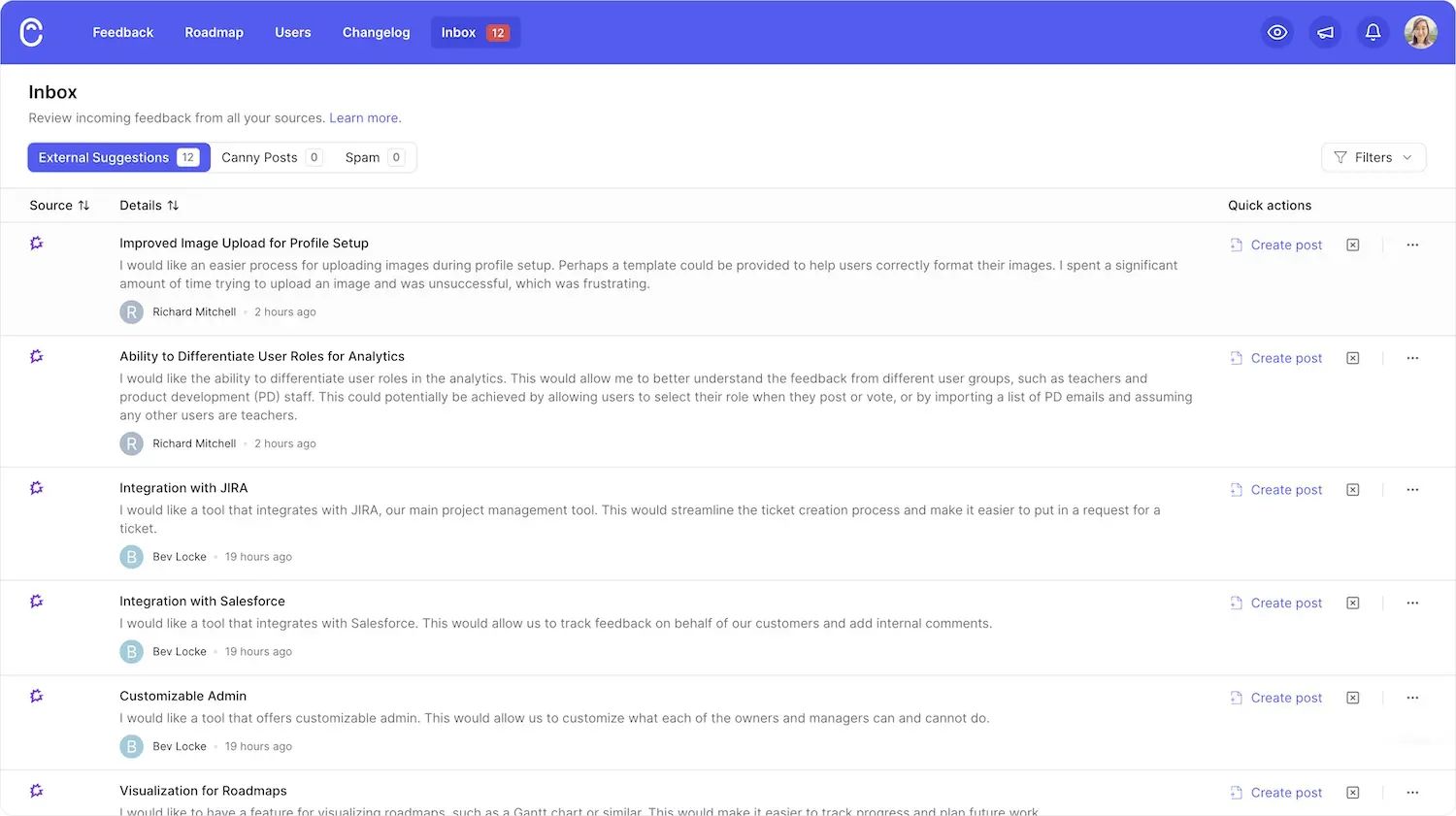
We’re currently running a beta for it so if you are interested in joining, reach out to our team!
Product marketing
Our product team is building high-value features for our customers everyday. That said, we don’t have a dedicated product marketer and realized that we can do more to celebrate what we ship.
This past year, during one of our retreats, we sat down and put together a product marketing plan. The goal was to share what we’re working on without it being a lot of new overhead. Now, we’re committed to sharing a product update every three weeks. Each update involves:
- Product team declaring which features are slotted in for a specific release date
- Sending out a product updates newsletter and sending out updates on our socials
- Publishing changelog entries for each new feature
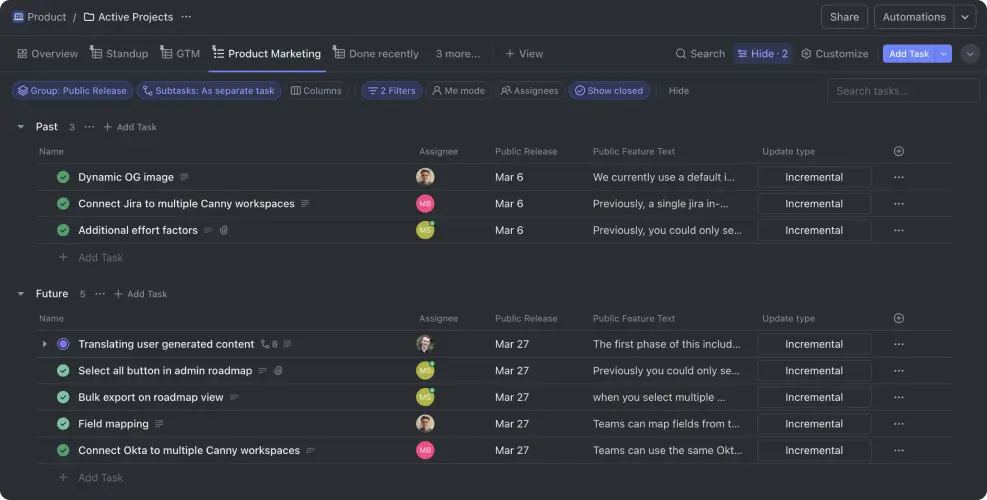
So far, our plan has worked really well. Primarily, it gives our customers more insight into what’s new in Canny. They can feel that the product is constantly improving.
Beyond that, we found benefits we weren’t expecting. This process caused some good ripple effects and discussions internally. Previously, our product development cycles were very flexible. The releases give our product team a rhythm without subscribing to a full scrum process. Outside of product, our other teams feel more connected. Positive change all around!
Founder time
I’ve talked about this before, but delegation is still very much something Andrew and I are working on. Especially as our team grows, I’ve been trying to protect my time more. We try to budget our time for things in two groups:
1. Things only we can do
For me, this includes stuff like writing this blog post! Reflections like these are fully based on personal experience—something someone else (or an AI) wouldn’t know.
I would also include product management in this list. Of course, we could hire a dedicated product manager. However, at least for now, I feel it’s very helpful for me to stay as close to the product as possible.
2. Things that we really enjoy doing
For Andrew, this includes writing code. Over time, Andrew’s responsibilities went into covering our legal and finance needs—things he’s good at but doesn’t particularly enjoy. In the past few months, he’s found more time to get back into the codebase, and I can tell he’s happier.
“Canny kicked off well thanks to Sarah’s design magic and my engineering chops. We see these as our superpowers. Doing what we’re best at keeps us happy and does wonders for Canny.”
Andrew
Something that helps me plan my time is writing tasks down. These kinds of systems are really personal, but here’s what’s been working for me:
1) Keeping a physical journal
I use a ring planner to write down key weekly work and personal tasks. Every night, I disconnect from electronics before bed and jot down anything new on my mind. Then, I keep my planner open in front of me on my desk as a constant reminder of what I need to get done. Something about writing it down makes it feel more “real”.
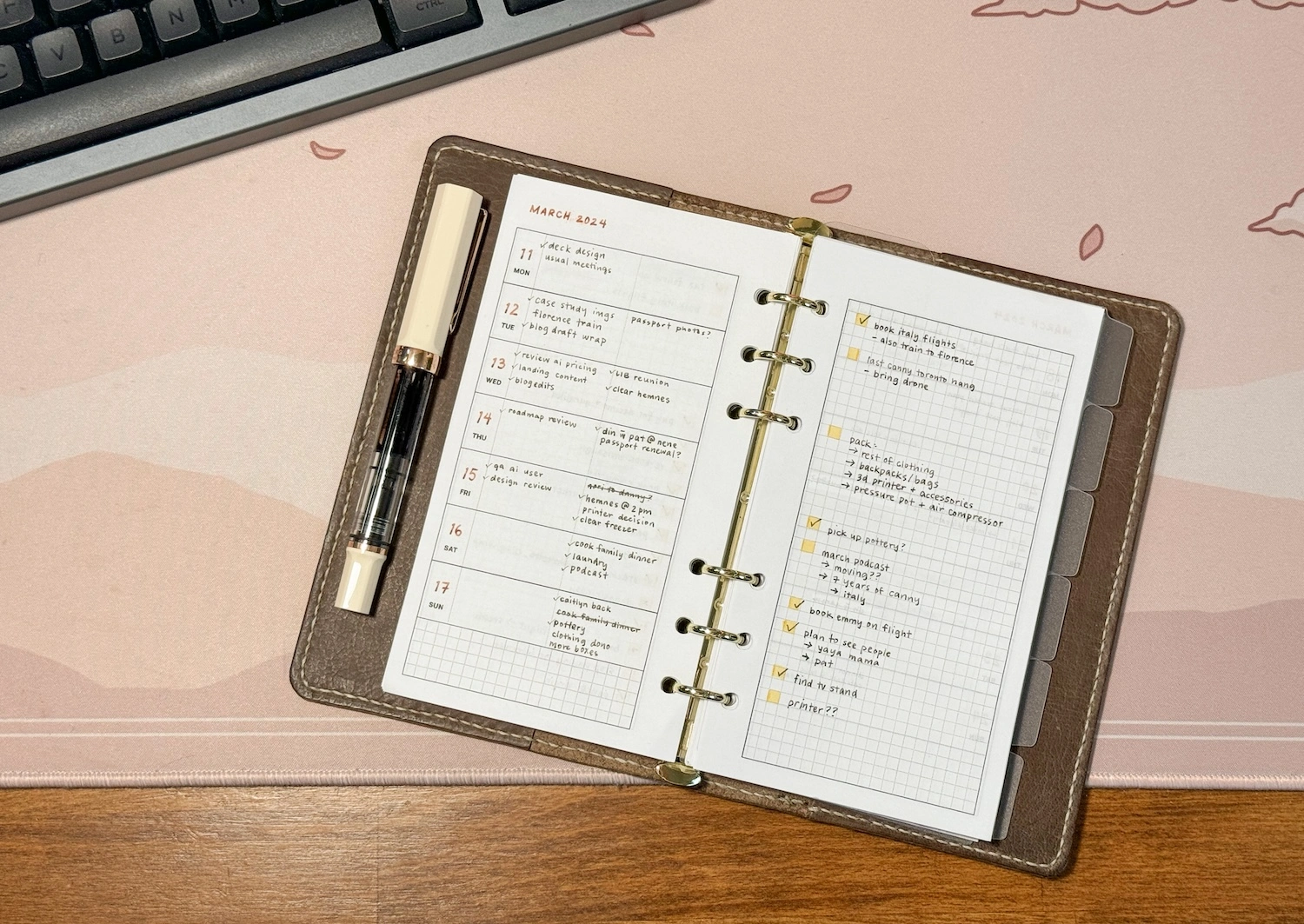
2) Brain dumping specific task details digitally
The nitty gritty gets documented digitally in a tool called Ellie. I can easily move tasks between different days and timebox them as needed. I also use an iOS shortcut on my phone that creates Ellie tasks for me when I’m out and about. It feels really good knowing that I don’t need to store everything in my brain.
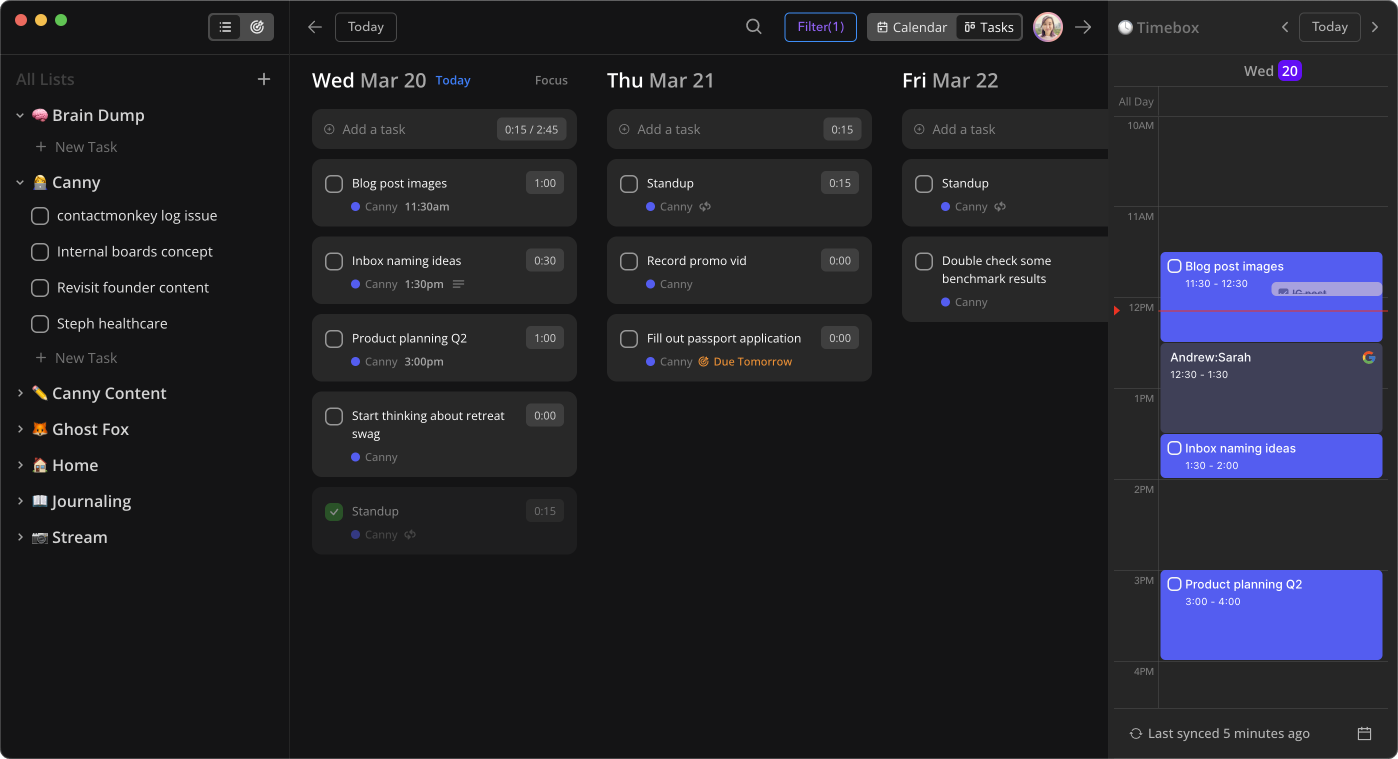
This past year, I looked back at the tasks I was doing repeatedly and asked myself what I could delegate. This usually requires some upfront work to train a new person. Once that’s done, it makes a huge difference.
The biggest changes we made to create space involved internal team restructuring.
Team changes
Team changes are often really challenging, and we had to make some tough decisions this last year. That said, I’m confident we are stronger for it.
Starting with the challenging parts: we moved people around to make the best use of their strengths. As managers, it’s important for us to identify and recognize the strengths of our team. In some cases, there might be a mismatch between the person and the role they’re in. The best thing to do in that scenario is to make a change. This can be a painful process, but it’s definitely worth it.
Moving onto management. While we still consider ourselves a very flat organization, we needed help here. It’s been great to have a few people step up and dedicate brain space to help our teams work effectively and happily. While Andrew and I were doing a lot of this management before, we weren’t great at it. Our time was much too divided to give people the attention they deserved.
Onto exciting parts: opening new roles! When we find gaps, we look for someone to fill them. This year we brought on Clare to help us out with all things operations. She now also leads our go-to-market teams, helping them identify opportunities for impact. One of the people Clare works with is Julia, who came onboard to take on our customer success needs. This is especially important to us given our focus on retention.
Another role that we wanted to fill this year was support engineering. Previously, we had our engineering team do a support rotation. Over time, it proved to be quite disruptive to core product work.
At first, we looked for an entry-level engineer to handle technical support questions. However, one of our engineers, Sara, stepped up to fill this need and so much more. She is now our customers’ point of contact for technical issues. Sitting between our product and go-to-market teams is also beneficial. She spots opportunities for improvement in our processes and communications across teams. We now refer to her as our go-to-market engineer.
“As an engineer at Canny, I deeply appreciate the opportunity to work for a company that values direct engagement with our customers. By dedicating engineering team members to work closely with users, we gain invaluable insights into their workflows. This enables us to fully leverage the power of Canny and swiftly implement functionalities that align with our customers’ goals.”
Sara
Last but not least, we hired our first virtual assistant! Steph is from the Philippines and helps out with a bunch of our miscellaneous tasks. These range from finding our retreat accommodations, to keeping our task statuses up to date, to building an AI benchmark dataset. These might seem like small tasks, but they add up to a lot over time.
Our team changes this last year made a huge difference in our overall impact as a team.
Personal updates & goals
We are so much more than our day jobs! All of us at Canny enjoy life outside of work.
Andrew and I were able to go on a few trips including a month in Korea, Japan, and Taiwan, and a spontaneous trip to Hawaii. It’s very different from being digital nomads, but I always enjoy an adventure.
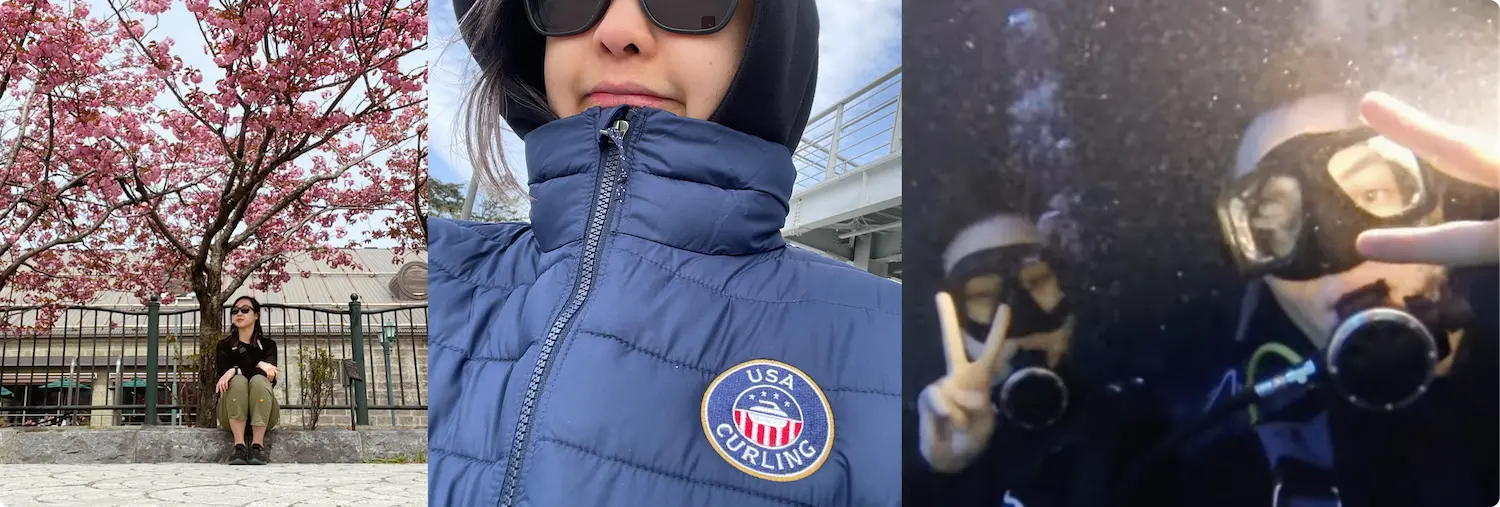
Outside of that, we mostly enjoyed our quiet life in Toronto with our dog, Emmy.
I personally spend most of my free time on hobbies. I started a little side hustle making artisan keycaps out of polymer clay. Through that, I’ve learned that I get a lot of joy out of creating something with my hands, shipping it to someone, and then seeing them love it.

The other big thing for me is journaling. I’ve been writing in my journal every day since January 1st this year, and I plan to for the rest of the year. I’ve found appreciation for documenting things that I know I’ll enjoy looking back at years from now. I’m also happy I can finally make use of all of the stationery I’ve been collecting for so long.

This is technically not in the last year but we’re moving to Seattle next month! It was a complicated and sudden decision, but we’re looking forward to being back on the west coast. If you’re in the area, say hi!
The team had some awesome accomplishments this last year too:
- Jacques: Got married and moved to Mexico.
- Maria: Is working out consistently and learned at least five songs on the guitar.
- Eric: Became a dad and won first place in some Updog frisbee games with his pup, Cloud Strife.
- Kaman: Joined Canny, opened an Etsy shop, got married, and climbed Mount Fuji.
- Ramiro: Ran his first 20k, traveled a bunch, and learned to snowboard.
- Dan: Started doing local sauna popups in Madison, WI. Check out the Smokin’ Barrel Sauna.
- Julia: Joined Canny and is learning Spanish, sewing, and salsa.
- Adam: Had a baby who is coming up on 10 months old.
Year 8
We are inching closer to double digits—wild.
During hard times, I’m especially grateful for our amazing team. While we’re working remotely, we are trusted to deliver. A lot of cool product stuff is coming down the pipeline, and I’m excited for our customers to see them. Our go-to-market team is on deck to make sure everyone knows the value Canny brings to software development.
Stay tuned especially to our next big AI-powered features. We are pushing hard to nail down the experience and quality. Join our Discord if you want the inside-scoop.
When we can get together in person, the focus is on team bonding. We work better together when we know each other better as people. Our next retreat is in Italy in May!
We feel good about our team at the moment, so we’ve slowed down hiring. I love having a small but mighty team. That said, this could change! Keep an eye on our jobs page if you’re interested in being a part of team Canny.
I’m hopeful that year eight will be a significant year in our story. Onwards!


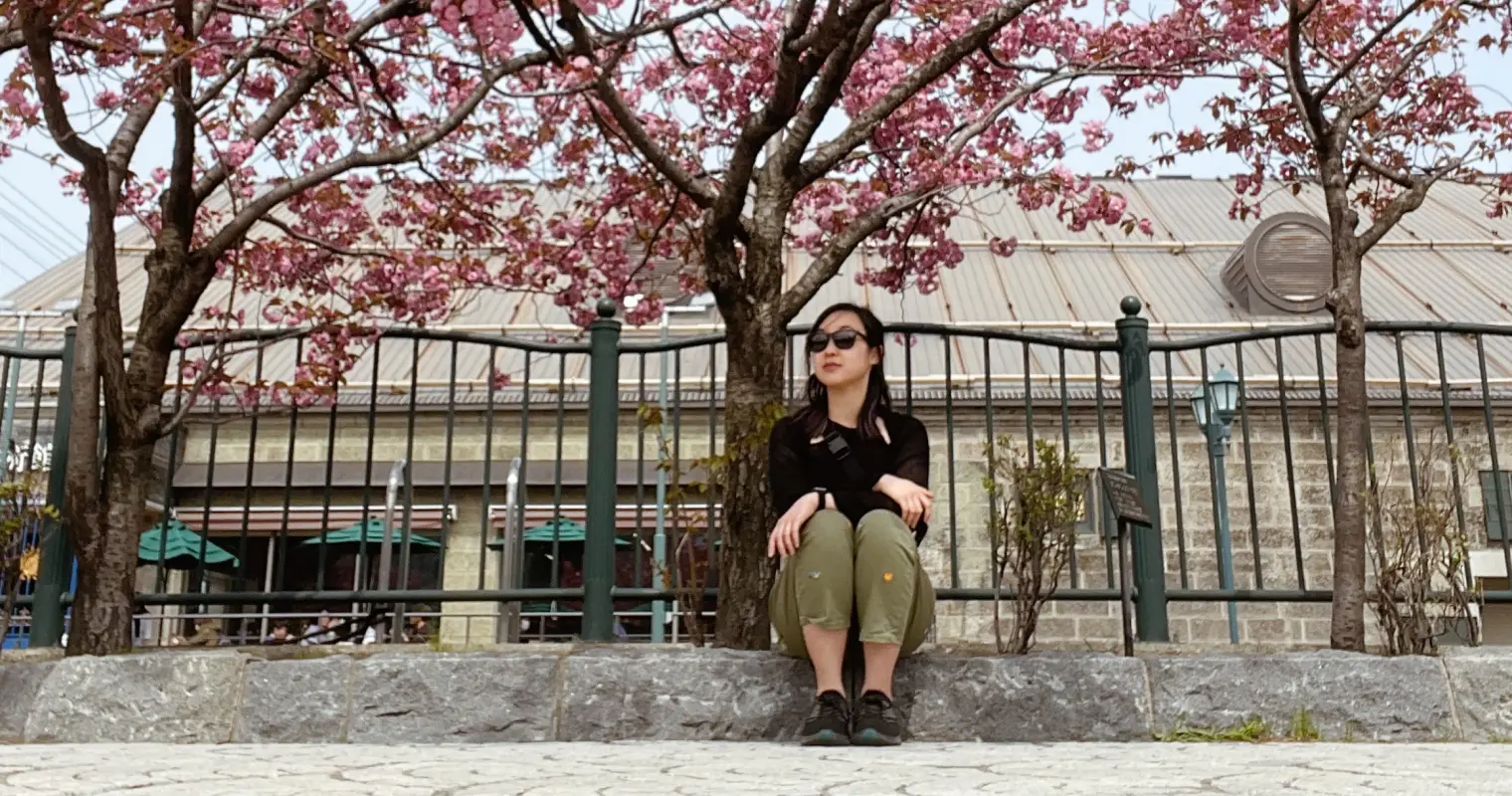

Congratulations Sarah, Andrew and the entire Canny team!
I recently met Sarah in person at an event after knowing her online for a few months. Her genuine personality shines through whether it be in person or online.
It is exciting to see the growth of Canny each year. I look forward to the upcoming years in review. No doubt there will be many!
Thank you for your kind words!
Awesome update! I see a lot of Canny Ads on Reddit lol
Glad you liked it! And yes, haha, we always try new things.
Congrats on the success – we’re big fans 🙂
Glad to hear it, thank you!